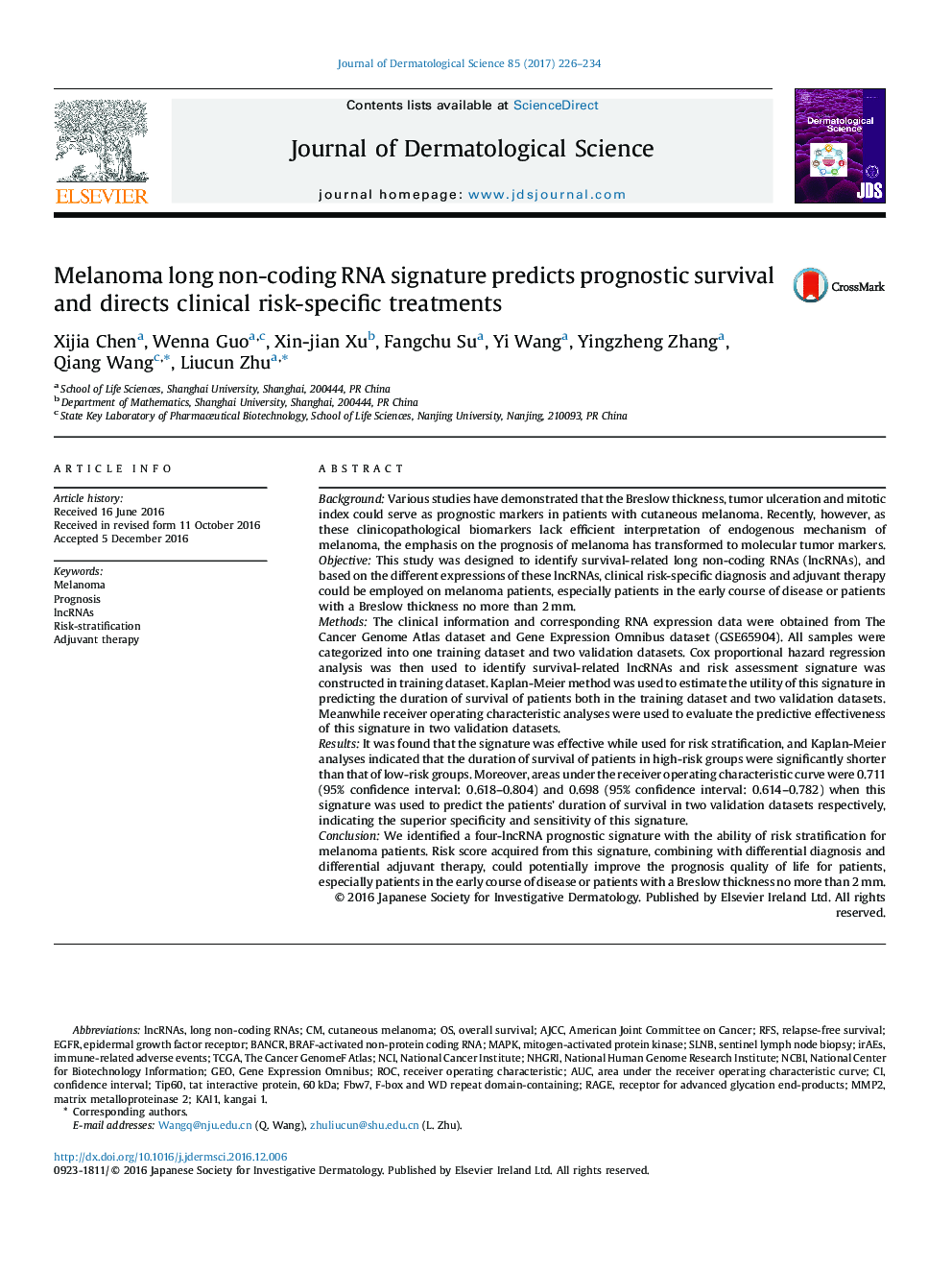| کد مقاله | کد نشریه | سال انتشار | مقاله انگلیسی | نسخه تمام متن |
|---|---|---|---|---|
| 5649071 | 1407114 | 2017 | 9 صفحه PDF | دانلود رایگان |

- lncRNAs are differentially expressed in patients with skin cutaneous melanoma.
- We constructed a four-lncRNA signature with the ability of predicting prognosis.
- Prognostic signature could potentially improve the prognosis quality of patients.
BackgroundVarious studies have demonstrated that the Breslow thickness, tumor ulceration and mitotic index could serve as prognostic markers in patients with cutaneous melanoma. Recently, however, as these clinicopathological biomarkers lack efficient interpretation of endogenous mechanism of melanoma, the emphasis on the prognosis of melanoma has transformed to molecular tumor markers.ObjectiveThis study was designed to identify survival-related long non-coding RNAs (lncRNAs), and based on the different expressions of these lncRNAs, clinical risk-specific diagnosis and adjuvant therapy could be employed on melanoma patients, especially patients in the early course of disease or patients with a Breslow thickness no more than 2Â mm.MethodsThe clinical information and corresponding RNA expression data were obtained from The Cancer Genome Atlas dataset and Gene Expression Omnibus dataset (GSE65904). All samples were categorized into one training dataset and two validation datasets. Cox proportional hazard regression analysis was then used to identify survival-related lncRNAs and risk assessment signature was constructed in training dataset. Kaplan-Meier method was used to estimate the utility of this signature in predicting the duration of survival of patients both in the training dataset and two validation datasets. Meanwhile receiver operating characteristic analyses were used to evaluate the predictive effectiveness of this signature in two validation datasets.ResultsIt was found that the signature was effective while used for risk stratification, and Kaplan-Meier analyses indicated that the duration of survival of patients in high-risk groups were significantly shorter than that of low-risk groups. Moreover, areas under the receiver operating characteristic curve were 0.711 (95% confidence interval: 0.618-0.804) and 0.698 (95% confidence interval: 0.614-0.782) when this signature was used to predict the patients' duration of survival in two validation datasets respectively, indicating the superior specificity and sensitivity of this signature.ConclusionWe identified a four-lncRNA prognostic signature with the ability of risk stratification for melanoma patients. Risk score acquired from this signature, combining with differential diagnosis and differential adjuvant therapy, could potentially improve the prognosis quality of life for patients, especially patients in the early course of disease or patients with a Breslow thickness no more than 2Â mm.
Journal: Journal of Dermatological Science - Volume 85, Issue 3, March 2017, Pages 226-234